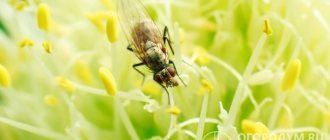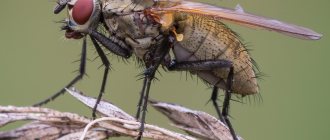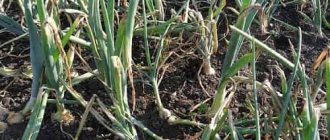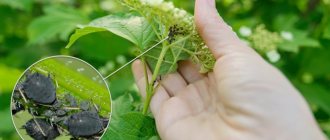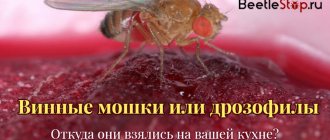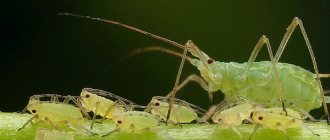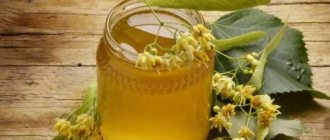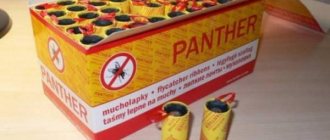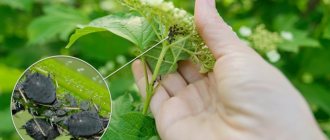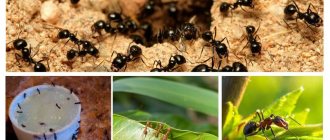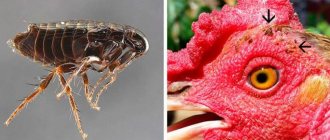How to get rid of onion flies at home? Using various folk remedies and methods, you can remove insects. The described methods are also effective against fruit flies.
You have heard that this happens - midges appear in the apartment, but such a problem did not exist for you before. Well, you are now a member of the club of those who are learning how to effectively deal with annoying insects. We will tell you how to get rid of onion flies at home, give basic knowledge and introduce you to the secrets. All you need to do is read the article and put the knowledge you have gained into practice! Below is about the dangers of the appearance of flies in an apartment, where they come from, and how to say goodbye to them forever. Wherever insects appear - in the kitchen, in the bedroom, in the bathroom - you will soon forget about their existence!
Onion midges - what kind of insects?
Midges are small flying insects with two wings that happily settle in human homes and feed on plant foods. In fact, the onion midge consumes not only onions, but also settles on other fruits, berries, and vegetables that are not stored properly in the apartment. There are several species of midges that live on plant products, and most often these are Drosophila (fruit flies) and scyriad soil midges.
You should not think that, apart from aesthetic harm, such small insects do not interfere with humans in any way. Even small midges are carriers of diseases. In people prone to allergies, their bites can cause severe skin reactions and swelling. These insects lay their eggs on food, the larvae emerge from them and immediately begin to feed intensively. Midges stain furniture, walls, and can even fly into a person’s mouth and nose.
Here are the main signs of midges that most often settle at home:
- Size – 1-3 mm
- Oval body
- Slow flight, not like a regular fly
- Six legs, two wings
- Yellowish, brown, black body color
ATTENTION: Whatever species the onion midge belongs to, in a very short period of time its colony will become numerous, because these pests reproduce extremely quickly.
Fertilizer and ammonia
The most effective means of pest control, according to experienced gardeners, is ammonia. A solution is prepared from it at the rate of 3 tbsp. l. ammonia in a bucket of water and water the soil well in the evening. Treatment should be carried out 3 times at monthly intervals. This is due to the fact that during the season the insect can colonize the site 3 times. And the nitrogen contained in ammonia is needed by onions as fertilizer. It nourishes the seedlings, gives them strength and prevents yellowing of the feathers.
Another effective remedy is ash. It can be wood ash or dead weeds. It is diluted with water, and the resulting product is used to water the beds with bulbous crops. You can add manure, tobacco dust, and powdered red pepper to the solution. Ash, like manure, fertilizes the soil and repels the onion fly.
Manure and peat can be applied to the soil before planting: the number of larvae and pupae will decrease several times.
Where do midges come from?
Despite their small size, insects can fly considerable distances, so they can end up in any apartment. They get to new housing in different ways, here are the main ones:
- Insect eggs may be present on vegetable and fruit products that were bought in a store, at the market, brought from a dacha, or taken from friends.
- It is possible that one or a couple of individuals accidentally enter through a window or door, after which they lay eggs and “start” the reproduction process.
- Pests also enter through ventilation from neighbors.
To reproduce, insects need a nutrient medium - warm, rotting foods, spilled juices, pieces of plant food lying around, used tea bags, sewerage with an abundance of plaque. Female small flies can also lay eggs on the bedding and food of pets, for example, when their cages are rarely cleaned. Midges love wet, unwashed kitchen rags and napkins.
Midges from onions breed especially well, because if stored improperly, this vegetable begins to rot quickly. Many housewives have onions in a dark, warm place, wrapped in a plastic bag, and this is an ideal condition for them to rot. Therefore, midges on onions multiply at tremendous speed, and will soon fly throughout the kitchen in dozens and hundreds.
Harm caused
Larvae mainly cause damage to plants. More than 50 individuals can inhabit one bulb at the same time. They damage not only onions and garlic, but also the bulbs of tulips, daffodils and other plants. They eat away the juicy core, after which the flower leaves turn yellow and fall off, and the tips on the onion feathers dry out, and an unpleasant smell of rotten plants is felt throughout the garden bed. The damaged areas are open to various fungal and bacterial infections. As a result of poor nutrition, the entire crop dies.
The larvae are a threat to all ornamental and vegetable bulbous plants
The insect causes the greatest damage to plants grown on sandy and loamy soils, and less damage to peat bogs. You should try to get rid of emerging insects immediately when the first generation of pests appears - in June, this will significantly increase the chance of preserving the harvest.
What to do if you find onion midges?
How to get rid of onion midges is a paramount question, and you need to start solving it by finding a place for their active reproduction. The main thing is to leave pests without food and a breeding ground for their offspring. The procedure will be as follows:
- Throw away spoiled onions, carefully sorting through all available vegetables.
- Place the onions in the refrigerator without signs of rotting or spoilage, placing them in small portions in plastic bags.
- If it is not possible to put onions and other root vegetables in the cold, they should be stored in boxes with sawdust, or, as a last resort, in well-ventilated fabric bags.
- Remove all fruits, especially citrus fruits, out of reach of midges.
- Throw out garbage on time, at first - 1-2 times a day.
- Wash dirty dishes immediately after eating.
- Limit the access of insects to water - they also need it for life. To do this, you should close all taps so that they do not drip, leave sinks dry, do not store water on the table, and thoroughly dry clean dishes.
- Remove and clean siphons a couple of times a week and use disinfectants to clean the sewer system.
- Wash your pets' cages regularly and prevent food residues from being left there.
IMPORTANT: If there are plants in the apartment, they also need to be cleaned, because insects can settle on them for lack of other food. You should reduce the frequency of watering and stop pouring tea leaves on the ground. If necessary, you can spray the flowers with a weak solution of potassium permanganate.
Tips to help you quickly get rid of onion midges:
We draw a conclusion
To prevent Drosophila flies from appearing in your apartment, you need to adhere to the following rules, including how to store onions correctly:
- Place only dry onions in boxes, without damage. Once or twice a month, go through your onion stocks, throwing away spoiled product.
- Do not keep onions near central heating radiators, and avoid high humidity.
- In braids, onions are better ventilated and rot less.
- Storing onions in bulk assumes that the layer thickness does not exceed 20-25 centimeters.
- You also need to monitor the cleanliness of your home, do the cleaning on time, getting rid of the remnants of sweet and starchy foods.
How to make midge traps?
Onion midges sometimes multiply on such a scale that simply getting rid of rotting vegetables does not bring proper and quick results. In this case, the hostess will have to take a number of more radical measures to get rid of uninvited guests. How to make baits with your own hands where insects will die? Here are good ways:
- Take a 0.5 liter plastic disposable glass, throw a piece of fruit into the bottom or pour a little sweet juice (compote). Wrap the glass in cling film, making several small holes in it. Leave the trap in the kitchen overnight, quickly put the glass in a tight bag in the morning and take it out of the house.
- Pour juice into the bottom of the jar or put overripe fruit, cut into slices. Cover the top of the jar with a paper funnel, placing its narrow side inward. Leave the jar on the table at night, pour water into it in the morning - all the midges will die.
- Pour water into a flat plate, drop a little citrus-scented dishwashing detergent into the water. The insects will land on the water, but will no longer be able to take off.
You can also get rid of flies using medications. Nowadays, any store sells special adhesive tapes and sheets to which harmful insects quickly stick. It is not recommended to use aerosols and other chemicals, because their residues can end up on the table or in food, causing harm to humans. But ventilating the apartment and mechanically removing pests using a towel through the window, or sucking them up with a vacuum cleaner will definitely not do any harm and are perfect as one of a set of measures to combat midges.
Damage caused
It is not the adults that cause harm to onions and garlic, but their larvae. The main danger of adult flies is that they constantly and almost continuously lay new eggs. It is clear that many larvae appear, which spoil the harvest. First of all, you should deal with the destruction of the larvae, and only then remove the fly.
The insect itself begins to carry out its parasitic activity as soon as sunny and warm days come outside. As a rule, the main period of its appearance is April – May. It is at this time that the highest reproduction activity is observed. Pests begin to lay their eggs in the beds where the onions grow or in dry scales.
The main activity of the larvae is aimed at sucking out all the juice contained in the pulp. This leads to the death of the plant. Experienced gardeners were able to identify a number of main signs indicating the presence of onion midges in the beds:
- Bulb rotting. If you take an onion and cut it in half, all the passages that were formed as a result of gnawing will be clearly visible.
- Unpleasant smell. Damaged pulp begins to rot, which leads to the formation of such a smell. You shouldn't eat such bulbs.
- The plant begins to lag behind in growth and gradually fades.
- The greenery located on the surface of the soil becomes dry, gradually turns yellow, and the tips themselves begin to curl.
To avoid the appearance of flies in the beds, you must adhere to the following recommendations:
Plant correctly. To prevent beds with onions or garlic from being damaged by the onion fly, they should be planted next to carrots. This pest is repelled by the smell of carrots, and therefore it tries to avoid being near it. This means that the pest does not lay its eggs here. She is disgusted by the smell of wild rosemary and tomato. Proper proximity will significantly reduce the risk of onion flies. Change of place
It is very important not to plant onions or garlic in the same place for a long time. The thing is that if pests manage to get into the soil, they can overwinter in it, and with the onset of heat they will begin to multiply and cause harm. Mulching
In the mulching process, it is recommended to use well-rotted manure. Instead of manure, you can use peat. Treatment. Before planting onions in the soil, you must first make sure that they are not infested with a pest. If there are traces of a fly, then it is better not to even plant such planting material, since it will die. A good onion also needs to be pre-processed. It is placed in hot water and kept for 3 minutes. Spraying. The first shoots should be sprayed with an infusion prepared from pepper or wormwood. After harvesting, the soil should be dug up very carefully. Thanks to this procedure, the larvae hidden in the soil will find themselves outside and die under the influence of frost.
Control methods can be as follows:
- Today, folk methods of fighting are extremely popular. The thing is that it uses components that can be found in everyone’s home. These methods are simple and environmentally friendly.
- Chemical. In this case, the midges are destroyed using various chemicals. This method is resorted to if it was not possible to remove pests using simple home remedies, and their number has only increased. Chemicals are always effective, but they are also harmful to the human body.
How to prevent the reappearance of pests?
To prevent insects from settling in your house or apartment again, you need to take measures to repel them. Thus, onion midges cannot tolerate the smell of pine needles and basil. Therefore, you need to purchase essential oils of fir, pine, and basil, soak cotton wool in them and place them in places where vegetables are stored.
Insects do not like the smell of clove seasoning - it can be stuck into citrus fruits that are stored outside the refrigerator. Midges also react negatively to the aromas of ylang-ylang, patchouli, and verbena oils, so they can be dripped into aroma lamps and used regularly. Midges also cannot stand the smell of camphor, which, by the way, is absolutely not harmful to humans. Preventing the appearance of midges is not difficult, but it is effective, and an unpleasant neighborhood will most likely not happen to them.
See also: Methods for successfully combating onion midges
Prevention measures
The practical application of preventive measures significantly reduces the risk of infection of cultivated plants by various types of pests. Onions are different in that they can accumulate chemicals that are used to control pests. Therefore, the main task is not only to protect the crop from pests, but also to take care of the environmental purity of food products. Sometimes this is quite difficult to do, but if you try, you can solve any problem. To ensure that the quality of the harvest remains at the proper level, it is advisable to take the advice of experienced gardeners. For example:
- Before planting, seeded onions are immersed in water at a temperature of +55 degrees for 5 minutes. After this, it is dried and sown on the beds.
- Onion beds should be located in well-ventilated areas.
- It is necessary to provide conditions for planting onions in new places every year.
- After harvesting, it is better to loosen the top layer of soil so that the pupae are exposed to the open air. At low temperatures they die.
The onion fly is a dangerous pest that can destroy onions in the beds in a very short time if the fight against the fly is not started in the spring.
Controlling onion flies with chemicals
When a gardener discovers a massive infestation of onion flies, it hardly makes sense to use traditional methods. In critical situations, only chemicals will help:
- Altar. The basis of this remedy is a combination of malathion and cypermethrin. The active components have a powerful effect, so they can destroy pests quickly enough. The advantages of the drug include the fact that it does not wash off after rain. Regardless of the conditions, the product remains effective for a long time. For 10 liters of water, only 5 ml of the drug is enough. In calm weather, plants are treated with the product using a sprayer.
- Creolin. The high efficiency of this drug has made it widely popular among many gardeners. However, you need to remember that the instant destruction of pests is associated with the high toxicity of the product. That is why Creolin should be used as a last resort. For 1 liter of water you will need 2 tbsp. l. drug.
- Intavir. The drug has moderate toxicity. At the same time, it destroys only pests, without causing any harm to bees and other beneficial insects. One tablet of the product dissolves in ten liters of water. The resulting composition is used to water the soil in the onion bed. After this treatment, the vegetable should not be eaten for two weeks.
- Zemlin. As you can guess from the name of the drug, it is designed specifically to combat pests that live in the ground. The soil is cultivated when the plant is planted. The second treatment is carried out after the crop is harvested. The product has a contact-intestinal effect. It can please you with a fairly long residual effect.
- Metronidazole. As you know, this pharmaceutical drug has a disinfecting effect. But once they decided to use it to combat onion flies. There are no exact proportions for preparing the solution. For example, if a garden bed is slightly infested, it is enough to dissolve only one or two tablets in 10 liters of water. When the situation is more serious, gardeners use up to 10 tablets. It is not clear why this is connected, but the effectiveness of this product receives different reviews. This treatment helped some people a lot, while others partially destroyed the pests. And some were generally dissatisfied with the result. That is why this method does not provide a 100% guarantee that you will be able to solve the problem that has arisen.
- Bazudin. The drug is mixed with sand or sawdust. Before cold weather, the mixture is poured into the ground. If there are larvae hiding there, they will be destroyed.
Before using any chemical, you should carefully read the instructions. Some drugs are prohibited from being used if you planted onions to produce greens.
Preventive measures and insecticides against the pest
There are simple but quite effective rules to prevent the appearance of onion flies in your area:
- Flies do not lay eggs in loose soil. Loosen it, adding humus;
- It is also recommended to mulch the ground with peat;
- As soon as onion shoots appear, it is recommended to treat them with bitter solutions of pepper, wormwood, and tansy;
- Plant onions mixed with carrots in one bed;
- Water, hill up and feed the plants in a timely manner. Provide the onion with the necessary care;
- Use “breathable” materials to protect the crop by covering the beds with them;
- It is not recommended to constantly plant onions in the same place. Don't forget about the need for crop rotation;
- Before planting, immerse the onion in hot water for 10 minutes;
- Also, healthy bulbs can be treated with potassium permanganate before planting;
- Before planting, carefully check the onions for any damage.
As a preventative measure, you can carefully dig up the soil in the fall. The pest hibernates at a depth of up to 20 cm. After digging up the garden, the larvae will be on the surface. Here they will not be able to survive in the cold. It is also necessary to ensure that there are no remnants of the old harvest left in the garden bed. This will deprive the pest of a favorable environment for development.
If you have already repeatedly encountered onion flies in your garden plot, it is recommended to treat the beds with various insecticidal agents at the end of spring:
- Fly eater;
- Sochva;
- Aktara;
- Teradox;
- Ant;
- Summer resident;
- Medvetox;
- Diazinon.
